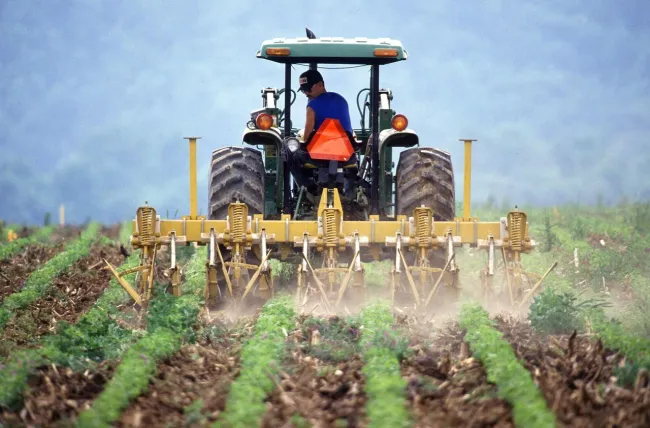This paper uses long-term studies from Europe and China to examine the effects on soil quality of organic matter addition, no-till practices, crop rotation and organic farming. It finds that yields are lower under no-till and organic practices, but that these practices are associated with higher soil organic matter.

The figure below illustrates soil properties under each different management practice.
 Image: Figure 1, Bai et al. Long-term effects of agricultural management practices on soil properties: A, organic matter addition versus no organic matter input; B, no-tillage versus conventional tillage; C, crop rotation versus monoculture; and D, organic agriculture versus conventional agriculture. Relative effects are expressed as median of ratios and visualised with different colours: orange, median ≤1; light green, 1 < median <1.5; and dark green, median >1.5. Values >1 indicate positive effects.
Image: Figure 1, Bai et al. Long-term effects of agricultural management practices on soil properties: A, organic matter addition versus no organic matter input; B, no-tillage versus conventional tillage; C, crop rotation versus monoculture; and D, organic agriculture versus conventional agriculture. Relative effects are expressed as median of ratios and visualised with different colours: orange, median ≤1; light green, 1 < median <1.5; and dark green, median >1.5. Values >1 indicate positive effects.
Abstract
In this paper we present effects of four paired agricultural management practices (organic matter (OM) addition versus no organic matter input, no-tillage (NT) versus conventional tillage, crop rotation versus monoculture, and organic agriculture versus conventional agriculture) on five key soil quality indicators, i.e., soil organic matter (SOM) content, pH, aggregate stability, earthworms (numbers) and crop yield. We have considered organic matter addition, no-tillage, crop rotation and organic agriculture as “promising practices”; no organic matter input, conventional tillage, monoculture and conventional farming were taken as the respective references or “standard practice” (baseline). Relative effects were analysed through indicator response ratio (RR) under each paired practice. For this we considered data of 30 long-term experiments collected from 13 case study sites in Europe and China as collated in the framework of the EU-China funded iSQAPER project. These were complemented with data from 42 long-term experiments across China and 402 observations of long-term trials published in the literature. Out of these, we only considered experiments covering at least five years. The results show that OM addition favourably affected all the indicators under consideration. The most favourable effect was reported on earthworm numbers, followed by yield, SOM content and soil aggregate stability. For pH, effects depended on soil type; OM input favourably affected the pH of acidic soils, whereas no clear trend was observed under NT. NT generally led to increased aggregate stability and greater SOM content in upper soil horizons. However, the magnitude of the relative effects varied, e.g. with soil texture. No-tillage practices enhanced earthworm populations, but not where herbicides or pesticides were applied to combat weeds and pests. Overall, in this review, yield slightly decreased under NT. Crop rotation had a positive effect on SOM content and yield; rotation with ley very positively influenced earthworms’ numbers. Overall, crop rotation had little impact on soil pH and aggregate stability − depending on the type of intercrop; alternatively, rotation of arable crops only resulted in adverse effects. A clear positive trend was observed for earthworm abundance under organic agriculture. Further, organic agriculture generally resulted in increased aggregate stability and greater SOM content. Overall, no clear trend was found for pH; a decrease in yield was observed under organic agriculture in this review.
Reference
Bai, Z., Caspari, T., Gonzalez, M.R., Batjes, N.H., Mäder, P., Bünemann, E.K., de Goede, R., Brussaard, L., Xu, M., Ferreira, C.S.S. and Reintam, E., 2018. Effects of agricultural management practices on soil quality: A review of long-term experiments for Europe and China. Agriculture, Ecosystems & Environment, 265, pp.1-7.
Read the full paper here. See also the Foodsource resource How do food systems affect land-use and biodiversity?




Comments (0)